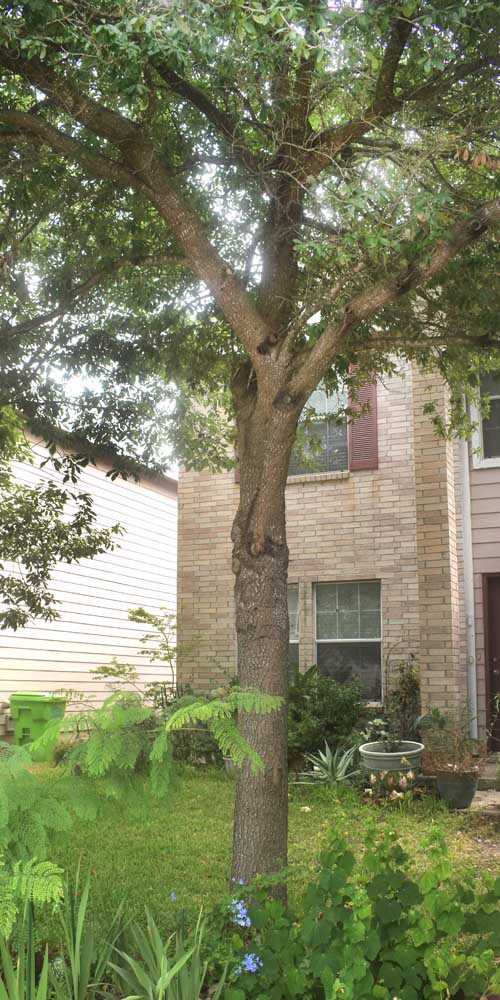What’s causing bark splitting on this live oak?
Published 5:45 am Saturday, September 3, 2022

- Bark splitting on a live oak tree.
Dear Neil: Several months ago we noticed bark splitting on a mature live oak in our yard. We figured it was the result of last year’s cold like some of the others we have seen you write about. However, recently we have seen swelling on the bark on the opposite side. We also are noticing swelling where branches have been removed and I guess we’re getting paranoid. What should we do?
I would suggest that you have a International Society of Arboriculture (ISA) certified arborist look at this tree closely for any signs of weakening. You are probably correct – it is most likely some form of radial shake caused by the extreme cold of February 2021, but you need to have a professional to look at it on site. There are some elements of the trunk 8-10 feet off the ground that don’t look quite right.
Trending
Dear Neil: The front of our house faces west. We have hollies that have been there for 32 years. All of a sudden, the ones on the south side have areas that have turned brown and look dead. The plants on the north side look normal and healthy. We have kept them watered and we have applied fertilizer with iron. What could the problem be?
Answer: I admit to being a holly fanatic and to having dozens of them around our landscape. I have had some of this random dieback in my dwarf Chinese and Carissa hollies this summer and I’m sure it was due to the extreme heat and moisture stress. I have found no evidence of any insect or disease issues. Like you, I have watered faithfully, but the plants just haven’t been able to take the water up uniformly to meet the plants’ needs. It’s happened on other species of plants as well. Trim out the dead wood and apply an all-nitrogen lawn fertilizer (with upwards of half of that N in slow-release form). Water them well and watch for new growth to fill in this fall and next spring.
Dear Neil: What is causing my geraniums to die back?
Answer: Since you sent your question to me in late August and in Texas, my answer is going to be heat and dry weather. Geraniums do best where daytime temperatures rarely hit 90F and evenings are down in the 60sF. They are not well suited to Texas in summer. Unfortunately, they need full or nearly full sun, so growing them in pots and moving them into shade doesn’t help.
Dear Neil: Thanks for the information on trimming my tropical milkweed plants by early September. I know that the wild native milkweed is preferable to the tropical type for monarchs, but where can I buy the plants or seeds?
Answer: You may be able to collect seeds from plants in native stands near you. You can also search for sources online. I found several. The National Wildlife Federation has sources listed, for example.
Trending
Dear Neil: Is there any way I can put microorganisms in grass clippings to make a mulch more rapidly? Could I mix yeast or vinegar?
Answer: I assume you’re talking about incorporating something in with the grass clippings as you put them into a compost pile. The best thing you can add there would be other compost that is already actively decaying. It will bring its own microorganisms in with it. Always include several forms of organic matter with your compost, including shredded tree leaves as they fall in a few weeks and well-rotted manure. The manure alone will bring copious levels of microorganisms. You’ll have no need to worry about adding yeast (and certainly not vinegar).
Dear Neil: I am confused. I just read your column that fertilizer now should be high in nitrogen, but I also saw something a while back saying that high nitrogen in cooler seasons promotes a fungal disease. I have bermudagrass. Please clarify.
Answer: You have a couple of wires crossed. The fungal disease gray leaf spot attacks St. Augustine that has been fed with nitrogen during the hot months of mid-summer. My recommendation has been, for the past 30 years, that we not apply nitrogen to St. Augustine turf between June 15 and early September. Bermuda lawns are not impacted by that schedule since gray leaf spot is not a factor with them.
Dear Neil: How can I prepare my Gold Star Esperanza for the winter? Even in mild winters it still freezes to the ground, then comes back the next spring. How can I keep the top from dying back?
Answer: How Gold Star Esperanza reacts to a Texas winter depends on where we’re trying to grow it and how cold it gets there. It’s a Zone 9 plant, which means its top growth is cold hardy only in normal winters in South Texas. You can expect it to freeze to the ground in Central Texas, the Hill Country and North Central Texas, and it would be treated as a tender perennial or annual in colder parts of the state. If you’re trying to overwinter it where it typically would die to the ground, you’re either going to have to cover it, or heat it, or both during any hard freezes. Some people prefer to grow them in large patio pots and shuttle them into and out of the protection of greenhouses or sunrooms.
Have a question you’d like Neil to consider? Mail it to him in care of this newspaper or e-mail him at mailbag@sperrygardens.com. Neil regrets that he cannot reply to questions individually.





